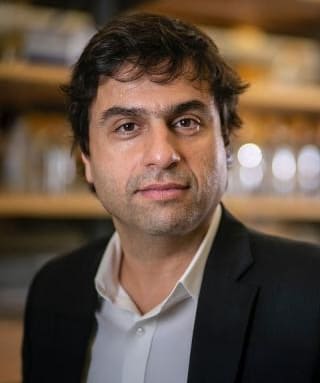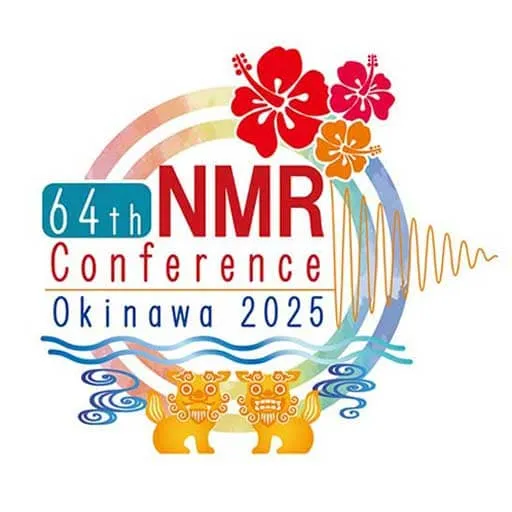口頭発表プログラム
Oral Presentation Program
招待講演者

A quantitative and predictive model of RNA cellular activity based on conformational ensembles
Hashim Al-Hashimi
Department of Biochemistry and Molecular Biophysics, Columbia University
Despite advances in predicting biomolecular 3D structures from sequence, cellular function is determined by conformational ensembles that describe the propensities to adopt alternative structures along an underlying free energy landscape. These ensembles remain challenging to characterize and predict. Here, we use 1H CEST NMR to quantitatively measure the relative propensities of HIV-1 TAR RNA to adopt a functional versus inactive secondary structure within its ensemble across a designed library of n = 27 sequence variants. These experimentally determined ensembles quantitatively predicted TAR–protein binding affinities and Tat-dependent transcriptional activity in cells, spanning a 150-fold range. Together, these findings establish RNA conformational ensembles as a critical, quantifiable, and now predictable link between sequence and function.

Molecular and Spin State Basis of Signal Transduction in Light-Oxygen-Voltage Sensitive Receptors
Songi Han
Department of Chemistry and Applied Physics Program, Northwestern University
How proteins transduce environmental signals such as light, stress or magnetic field vectors into responses, including mechanical and fluorescence, that activates subsequent actions remains a central and elusive question in biology, and is central to environmental signal entrainments across all kingdoms of life. I will discuss the molecular basis of light activation of light-oxygen-voltage (LOV) protein variants that elicit transduction of blue light excitation to mechanical energy or magnetic field dependent fluorescence. The excited triplet state formed upon light activation serves as a central, spin state-dependent, molecular switch. Our study using electron and nuclear magnetic resonance spectroscopy of the mechano-responsive AsLOV2 protein shows hydration water as an active medium that drive long-range conformational changes to achieve light-to-work signal transduction. In contrast, the magnetic field dependent variant, MAGLOV, decouples the excited state triplet from engaging in mechanical movement, gives rise to a long-lived triplet state or charge transfer and shows field-dependent fluorescence. A dual electron and nuclear magnetic resonance instrumentation at 7 T and 2K can achieve direct detection and control over initialization of the excited state triplet and the study of spin-dependent triplet state action center in “slow motion” by cryogenic cooling.

Residual dipolar couplings in organic structure elucidation
Christina Thiele
Clemens Schöpf Institut für Organische Chemie und Biochemie, Technische Universität Darmstadt
Information about the three -dimensional structure of organic or organometallic compounds can improve our understanding of their function. Thus, the determination of their 3D-structure in as native an environment as possible is necessary.
Together with 3J couplings and NOE parameters residual dipolar couplings (RDCs) can be used for this approach. RDCs belong to the class of anisotropic NMR-parameters and can yield complementary information. The prerequisites and limits for using RDCs on organic compounds (alignment media, simultaneous determination of configuration and conformation, flexibility, etc.) will be discussed.
An overview of the use of RDCs for organic structure determination will be given and their complementarity with other NMR parameters will be discussed on selected examples.

